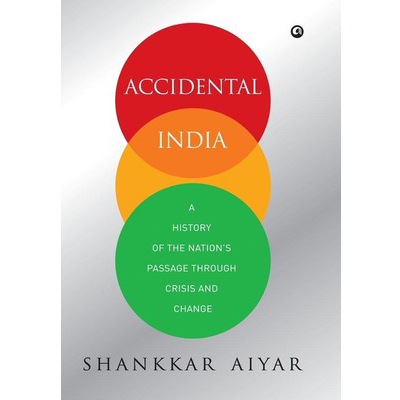Book: Accidental India
Author: Shankkar Aiyar
Publishing House: Aleph Book Company
Shankkar Aiyar’s book, Accidental India, has even more relevance in today’s environment, given the trend towards consumption of real-time information in an abbreviated manner (read social media, especially Twitter) which encourages an almost junk-food style of an information diet – quantity without much value. This book looks at seven “accidents” that shaped India’s post-independent socio-economic landscape, for the better, and substantially so.
The nationalisation of banks in 1969, the Green Revolution of 1964, Operation Flood that started around 1949 but took off only in 1970, the Mid-Day Meal Scheme of 1982, the software revolution that traced its roots to 1990, the Right to Information of 2005, and the economic liberalisation of 1991 – each owed their origin to happenstance for the most part.
The most known and the most accidental of these seven has to be Verghese Kurien’s case. Kurien received a scholarship from the government of India to study dairy engineering at the Michigan State University (MSU), but studied metal casting, metallurgy and nuclear engineering instead. On returning to India, he was required to serve out a bond at Anand in Gujarat as part of the scholarship, where, by his own account, he whiled away much of his time, and almost left after the bond period.
Kurien stayed back in February 1950 back at the request of Tribhuvandas Patel, and ended up staying for the rest of his life. The results? The triumvirate of Kurien, Tribhuvandas Patel, and Harichand Dalaya – with Maniben, Sardar Patel’s daughter, as their “spiritual compass, philosopher, and guide” – would see India’s annual milk production rise from 17 million metric tons in 1950 to 66 million tons in 1996. The nationwide replication of the “Amul” model in Kaira would be undertaken at the behest of Prime Minister Lal Bahadur Shastri, who asked Kurien to create a national grid of “Amuls” across the country – “Make this your mission and whatever you need for it, the government will provide.”
It can be said at least three of the “accidents” – the Green Revolution, economic liberalisation of 1991, and the software revolution – owed their beginnings to the socialist straitjacket that was cast on to the Indian economy after Independence. The stifling and overbearing intrusion of the state and its bureaucrats into every sphere of the economy made any large-scale innovations next to impossible.
– Navmeen Khot




6 Comments